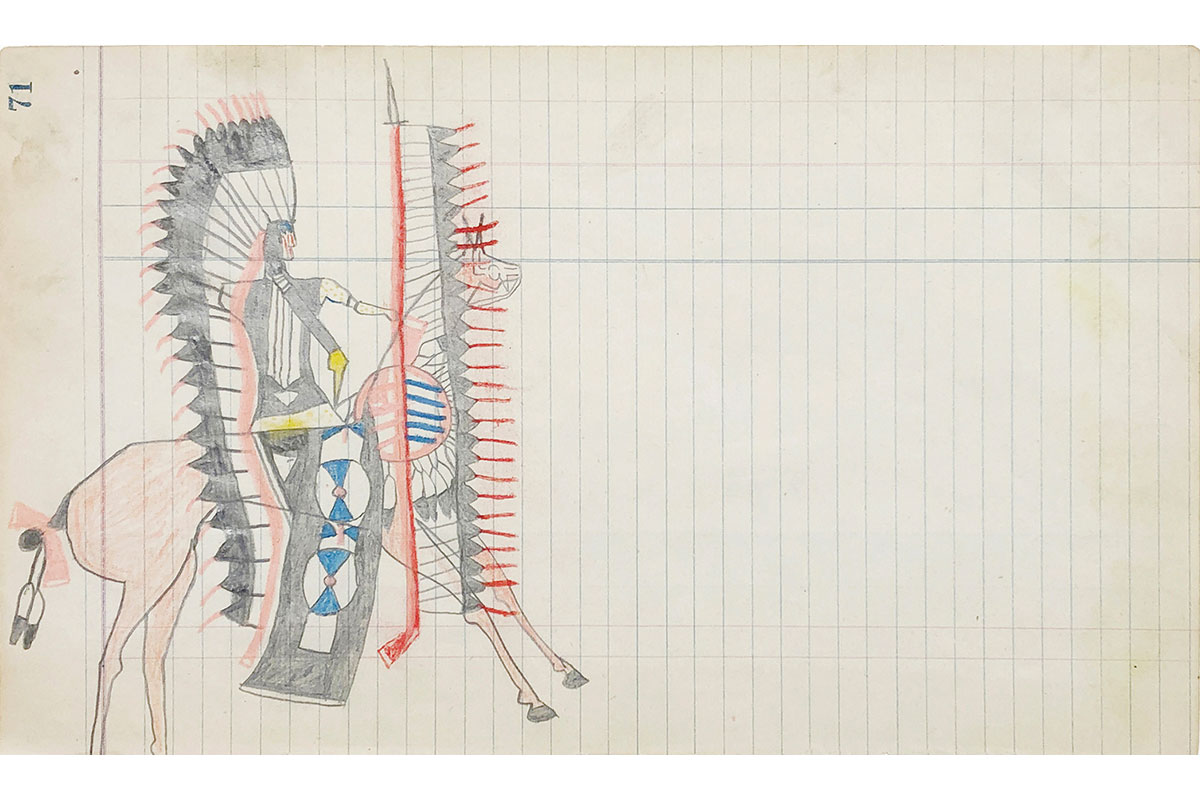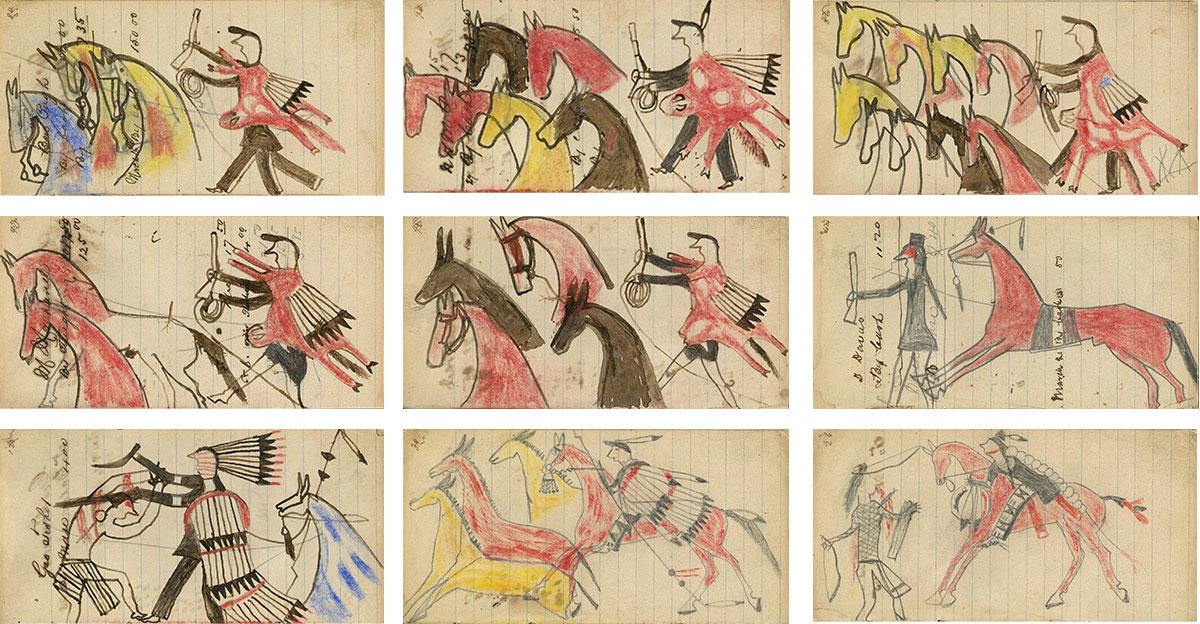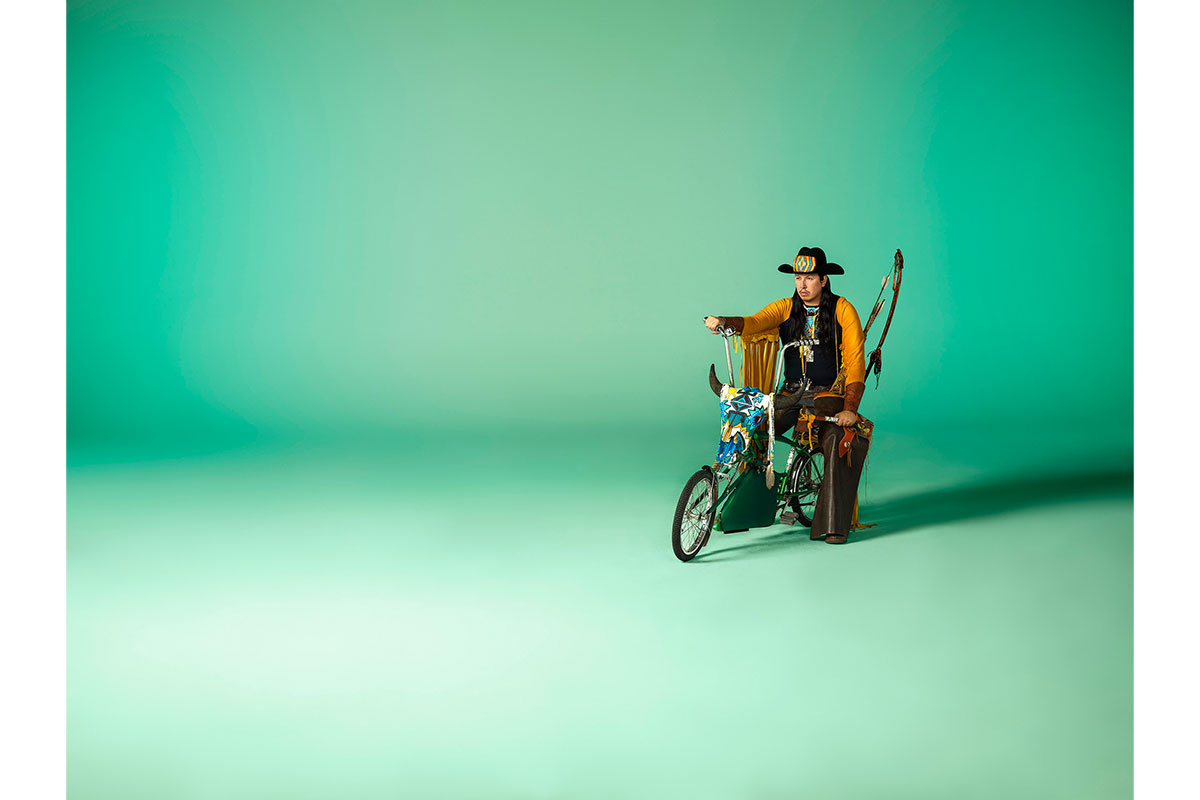February 7 – March 31, 2023
Fast Ponies: Past and Present
Frieze Los Angeles 2023

Donald Ellis Gallery is pleased to present Fast Ponies: Past and Present at Frieze Los Angeles 2023, held at Santa Monica Airport between February 18-19, with invitation-only previews on February 16 and 17, 2023.
On view at booth H04, the exhibition is the second iteration of Fast Ponies: Past and Present, showcasing a new body of work by critically acclaimed Lakota artist and filmmaker Dana Claxton in dialogue with early 20th century Plains pictographic drawings. The presentation continues Ms. Claxton's engagement with historical Ledger Art introduced with the online exhibition Fast Ponies and War Bonnets: A Lakota Look at Ledger Art.
By staging the human figure in an open space evocative of the vastness of the Great Plains, both historical Plains drawings and Claxton’s photographs foreground the dress and personal belongings of their respective protagonists. Both visualise predominantly male cultures, bringing together references to Plains warrior societies, applied cultural and spiritual aesthetics and in Claxton’s case hip hop, lowriding and cowboy culture. Yet unlike Ledger Art, which was predominantly created by male warrior artists in response to events deemed important by the community, Claxton composes her images with a heightened sense of formality. Past, present and future fold into one another, speaking of the encounters, exchanges and violent conflicts that continue to shape North American Indigenous experiences to the present day.
Ledger Drawing
attributed to Cedar TreeCedar Tree Ledger Book (pg.71)
Southern Arapaho
Central Plains


Donald Ellis Gallery is pleased to present, for the first time, drawings from the Goodwyn Ledger Book at Frieze Los Angeles. The Goodwyn Ledger contains the only known and documented series of Ledger Drawings originating from the geographic region of Canada. The handwritten notes on the accounting paper on which the drawings were originally created clearly indicate that the contributing artists resided in the Wood Mountain Uplands in what is now southwestern Saskatchewan in the early 1880s. Crucially, this makes them contemporaneous to the allied Lakota and Cheyenne resistance to American colonial expansion, military violence and the reservation system in the 1860s and 1870s. Led, among others, by Hunkpapa Lakota leader Sitting Bull, approximately 5,000 Lakota people migrated to present-day Saskatchewan following the Battle of the Little Bighorn/Greasy Grass in 1876. The Goodwyn drawings thus manifest acts of war and resistance that implicate Canada and the U.S. in the very moment of their respective formations. In stark contrast to mainstream narratives, however, they capture events from an Indigenous point of view. Uniquely placed at the intersection of art, documentary and storytelling, the importance of the Goodwyn Ledger Book in preserving and recounting the shared histories of the Lakota and Canadian nations cannot be overstated.

Ledger Drawing
attributed to Wanbli Hito (Roan Eagle), b.1863Roan Eagle Ledger Book (pg. 155)
Lakota
Northern Plains
Ledger Drawing
attributed to Wanbli Hito (Roan Eagle), b.1863Roan Eagle Ledger Book (pg. 59)
Lakota
Northern Plains















